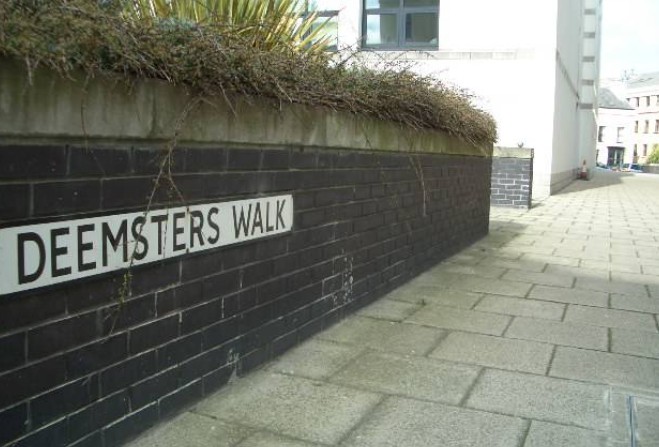
Jury hears details of post-mortem carried out on 60-year-old
*This report contains information which some readers may find distressing.
Fatal injuries sustained by a Ballabeg man who died, following an altercation with his lover’s husband, were caused by ‘forceful stamping’ or ‘jumping’.
That’s the view of the Home Office pathologist who conducted the post-mortem on Neil Edward Roberts.
The 60-year-old was pronounced dead, at a property on Queen Street in Castletown, in the early hours of 1 December 2013.
Ian Anthony Anderson is currently undergoing a retrial accused of his murder.
You can find out more HERE.
Pathology
At Douglas Courthouse today (17 May) Doctor William Lawler took the jury through the findings he'd recorded following Mr Roberts’ death.
Highlighting 40 external injuries to various areas of Mr Roberts’ body - including abrasions, lacerations and bruising – Dr Lawler told jurors he’d also catalogued multiple internal injuries.
These included a fractured skull, bleeding around the brain - which he said was the effect of ‘shaking’ - and internal bruising to his neck described as ‘fairly substantial’.
Fractures to the jaw, cheeks, eye sockets and nose were also highlighted; internal bruising of the face - described as ‘very extensive’ - was, he said, ‘virtually confluent’.
Bruising on Mr Roberts’ right hand could, the pathologist said, be the result of an ‘offensive’ injury.
Blunt force trauma
Twenty-three fractures were recorded to the front, side and back, of Mr Roberts’ ribcage – he also suffered fractures to his spine and sternum.
“I have no doubts that these occurred during life,” Dr Lawler added – with the pathologist explaining that any form of resuscitation attempt would not have been responsible for them.
Mr Roberts’ intestine was also bruised and part of it torn – an injury the pathologist said was likely caused by ‘some form of localised blunt force trauma’.
His pancreas showed ‘extensive disruption and fragmentation’ – something jurors were told would have required a ‘considerable’ amount of force.
“It is an unusual injury – an uncommon injury,” Dr Lawler said - adding that he ‘feels sure’ the victim was lying on the floor at the time it was sustained.
When questioned about how it was caused he told the court it would not have been from a punch and was ‘very unlikely’ to be the result of a kick.
A stamp, the pathologist said, was ‘not impossible’ but ‘unlikely’ adding: “I think some form of localised force from a knee.”
Dr Lawler told jurors he was of the opinion that Mr Roberts died shortly after his face was injured adding: “I don’t think he could have survived very long at all after the facial injuries occurred.”
Mr Roberts’ peritoneal cavity contained just under three pints of un-clotted blood.
“A loss of this amount of blood is, quite simply, incompatible with life,” the pathologist added.
Cause of death
Mr Roberts’ cause of death was recorded as intraperitoneal haemorrhage in the abdominal cavity as a result of blunt force disruption of the pancreas.
“I think that this man must have been subjected to a considerable amount of blunt force trauma,” he told jurors.
It was, he said, his opinion that Mr Roberts’ facial injuries had been caused by ‘repeated forceful stamping or even jumping upon’.
“This is forceful – this is severe,” Dr Lawler told the court.
Addressing the injuries to the self-employed gardener's neck he added: "I think stamping upon is the most likely explanation."
The injuries to his chest, he said, caused by 'something like forceful stamping or jumping upon'.
Questioning the damage to his abdomen prosecuting advocate Peter Wright KC asked the pathologist: "Is it the same?"
"Oh yes," Dr Lawler replied.
Trial continues
Ian Anderson denies murder.
The trial continues.


 Disruption at Ronaldsway airport following incident with light aircraft
Disruption at Ronaldsway airport following incident with light aircraft
 Hopes for better working relationship between government and hospitality sector
Hopes for better working relationship between government and hospitality sector
 'A lot of work to do' on low income housing
'A lot of work to do' on low income housing
 Public servants killed in the line of duty eligible for new award
Public servants killed in the line of duty eligible for new award
 Multi-million pound Villiers development recommended for approval
Multi-million pound Villiers development recommended for approval
 Rosalind Ranson row draws to a close
Rosalind Ranson row draws to a close
